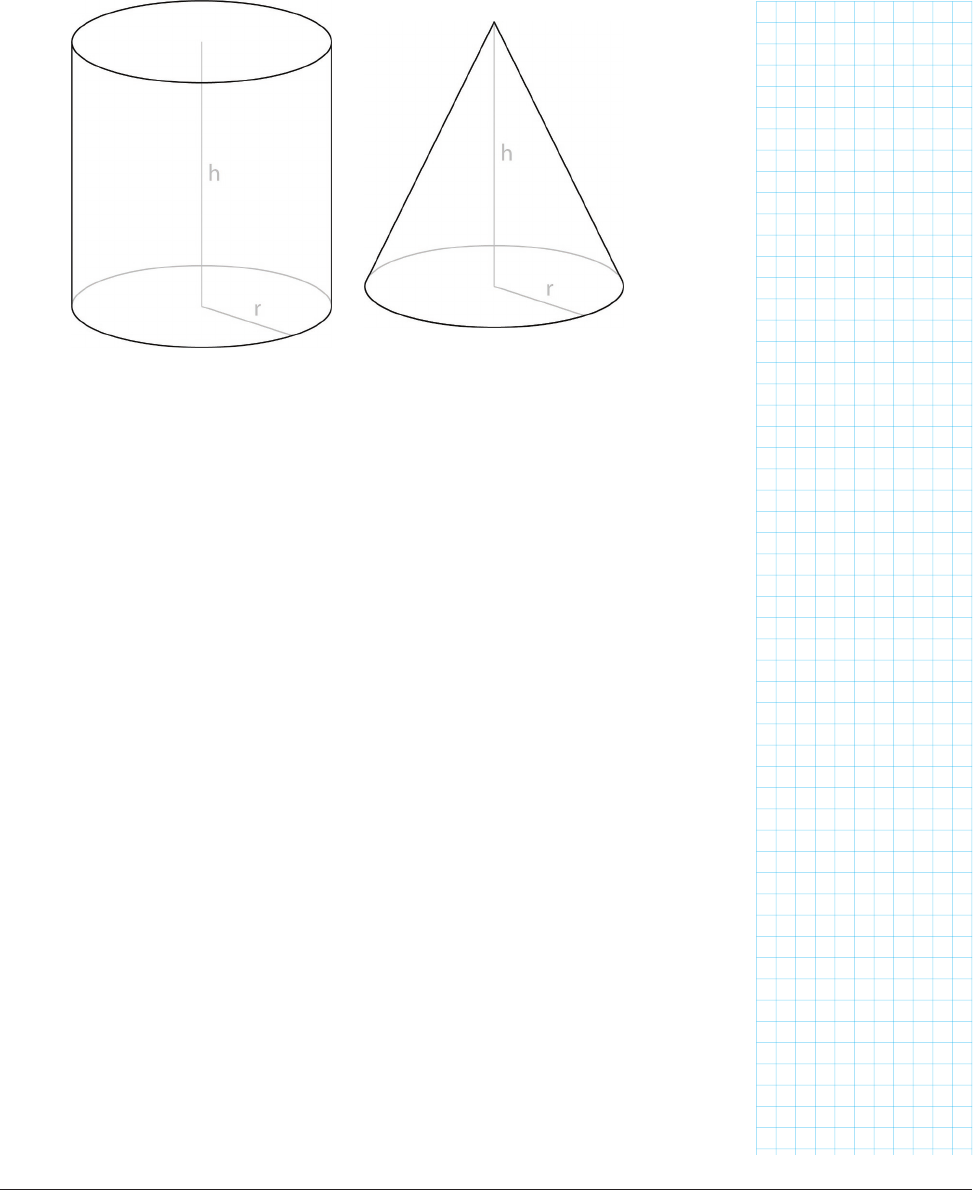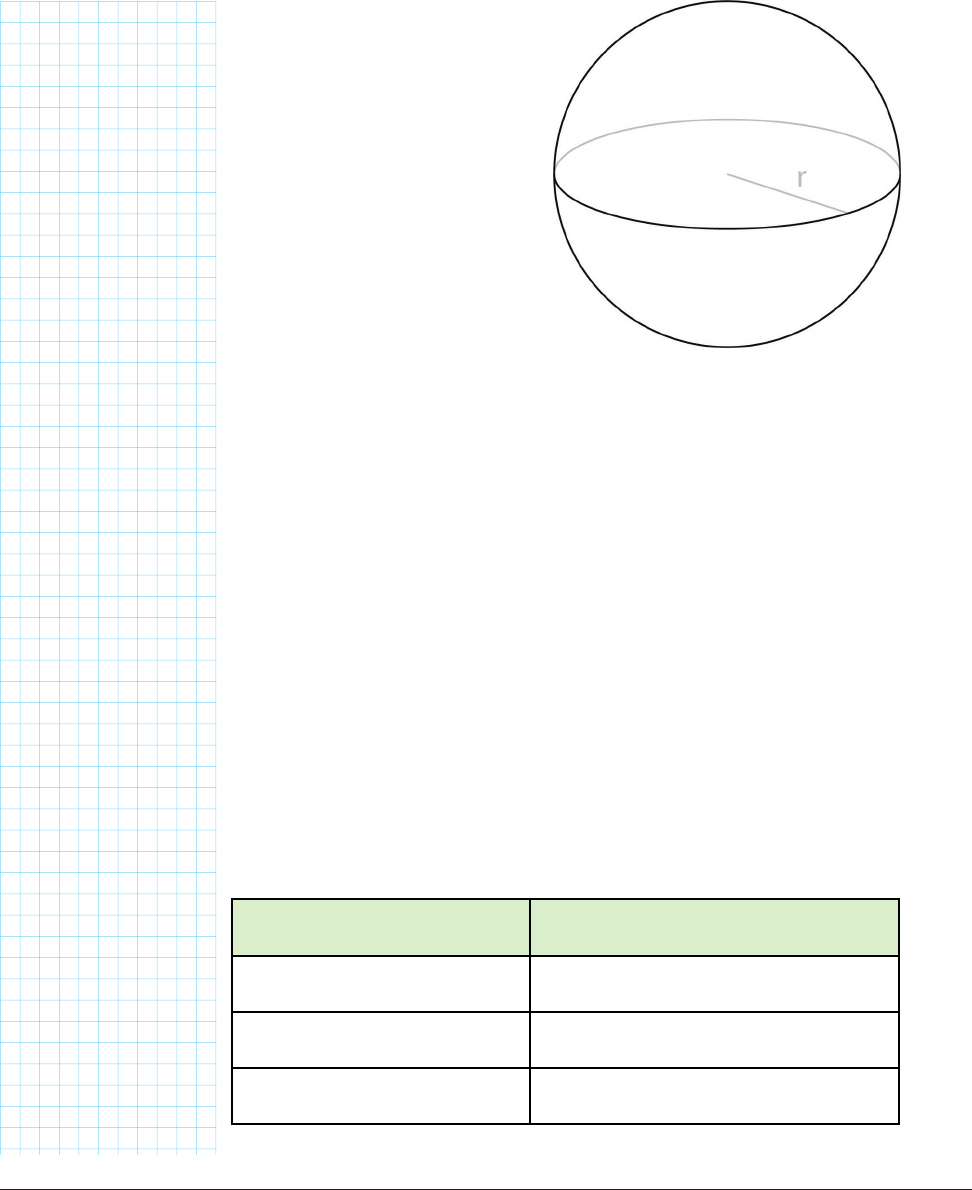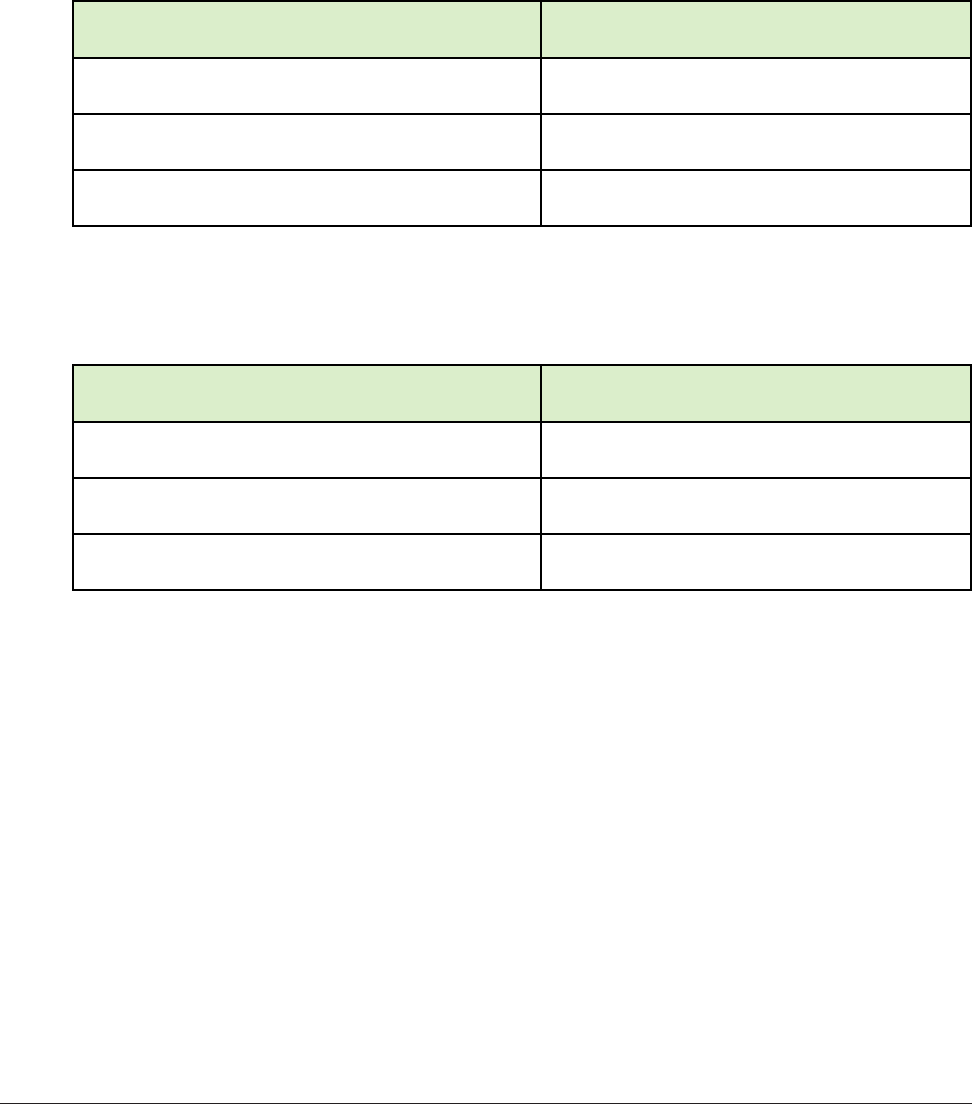
The volume of an oblique prism is just the base times the height too. The top
polygon of an oblique polygon is not directly above the base. However, the top
and the base, as well as every horizontal cross-section in between, still have
the same area. The vertical distance between the top and the base is still the
same, therefore the volume remains the same.
Figure 8-2 shows a right triangular prism and an oblique triangular prism.
These were both made with the model prism.scad. This model by default
prints hollow shapes whose inner volume is the specified one. If you set the
wall thickness (wall variable) to zero, it will instead create a solid object with
the specified volume.
The volume stays the same even if the sides are not straight, as long as the
edges all had the same curve, so that the cross-sections all remained the
same. To demonstrate this another way, imagine a stack of identical coins.
If we push some of them so that they aren’t a straight cylinder, the volume
of the stack (the sum of the volumes of all the coins) is still the same (Figure
8.3).
This is called Cavalieri’s Principle, named for Bonaventura Cavalieri, a
FIGURE 82: Triangular right prism and oblique prism
FIGURE 83: Two stacks of coins, each with the same volume
Make: Geometry 155
Geometry_Chapter10_v15.indd 155Geometry_Chapter10_v15.indd 155 6/23/2021 9:10:05 AM6/23/2021 9:10:05 AM

17th-century Italian mathematician. The Principle can be stated like this: If
you take a series of slices through two objects parallel to the base, you can
compare the area of the cross-section where they were cut. If, for every pos-
sible parallel cut, the two objects have equal-area cross-sections, then the
volumes of those objects are also equal, even if the shapes of the cross-sec-
tions are different.
MODIFYING THE MODELS
The model prism.scad and pyramid.scad have these variables:
• v = 50000;
• volume in cubic mm (cc * 1000)
• h = 30;
• height in mm
• n = 6;
• number of sides (not including top/bottom); use 300 to get a
cylinder
• wall = 1;
• Wall thickness, in mm; should be about twice the line width
for your printer. If wall = 0, the model will output the
solid model. If wall is greater than zero, the pieces print
out hollow and open, with an interior volume equal to the
parameter v.
• lid = false;
• Changing this parameter to “true” creates an additional
removable lid that fits over the open end of the part. Note
that these lids tend to add quite a bit to the print time of the
part. (Default is no lid.) This variable is ignored if wall = 0.
• oset = [0, 0]; (right prism or pyramid), or
• oset = [30, 0]; (oblique prism shown here - any nonzero values
work)
• The x, y coordinate offset of the top of the prism relative to
the bottom
In addition, the pyramid.scad model allows you to add a little ball on the top
to make it easier to handle. The ball parameter specifies the radius. If ball
is left set to its default value of zero, the point will still be rounded-off with a
radius equal to the wall value.
Create a triangular (n = 3), rectangular (n = 4) and hexagonal (n = 6)
prism, all with the same volume. Make one of them oblique. Try the exercise
of filling them with salt one after each other to see if they are the same as
Make: Geometry 157
156 Chapter 8: Volume, Density, and Displacement
Geometry_Chapter10_v15.indd 156Geometry_Chapter10_v15.indd 156 6/23/2021 9:10:05 AM6/23/2021 9:10:05 AM

each other (as they should be). If they aren’t, check that you didn’t accidentally
scale one of them in the slicing software.
VOLUME OF A CYLINDER
A cylinder is an object that has a constant circular cross-section, like a soup
can. The sides are straight and parallel to each other, at right angles to the
circular cross-section (Figure 8-4). There are skewed cylinders with sides
that are not at right angles, and they can be treated just as we did oblique
prisms. To get the volume of a cylinder, we multiply that cross-section times
the height. Since the cross-section is circular, its area is πr
2.
If we call the
height h, then
Volume of a cylinder = base area * height = πr
2
h
VOLUME OF A CONE
A cone, like a cylinder, has a circular cross-section. However, this cross-sec-
tion steadily gets smaller as we go from the base of the cone up to its point
(Figure 8-5). Think of an ice-cream cone or a party hat. You might expect that
the area of the base, πr
2
would be involved somehow. As it turns out, if a cone
has height h, then
Volume of a cone = ⁄ * area of the base * height =⁄ πr
2
h
Notice that this is exactly ⁄ the volume of a cylinder of the same radius and
height. The philosopher Democritus of Greece, who lived about 2400 years
ago, is credited with being the first to realize this, although why it was true
FIGURE 84: Anatomy of a cylinder FIGURE 85: Anatomy of a cone
Make: Geometry 157
Geometry_Chapter10_v15.indd 157Geometry_Chapter10_v15.indd 157 6/23/2021 9:10:06 AM6/23/2021 9:10:06 AM

had to wait about 2000 years for
Cavalieri. Archimedes (about 100
years after Democritus) expanded
his ideas to get the relationships
among the volumes of spheres,
cones, and cylinders.
VOLUME OF A SPHERE
You can think of a sphere as the
3D equivalent of a circle. A ping-
pong ball is a sphere. The Earth is
more or less spherical. Technically,
a sphere is defined as the set of
points that are all the same distance
(the radius) from its center (Figure 8-6). Given that, it’s not too surprising that
all you need to get the volume of a sphere is the radius, which we will call r.
Volume of a sphere = ⁄πr
3
For example, if we had a sphere that had a radius of 2 cm, the volume would
be
⁄πr
3
= ⁄π * (2cm)= ⁄π * 8cm
3
= 33.51cm
3
If you wanted to measure all the way around a sphere (making a circle like
the equator on Earth), that line is a 2D circle of radius r; therefore the cir-
cumference will be 2πr.
VOLUME SPECIAL RATIOS
Let’s review the volume formulas. Remember that r is the radius of the
shape in question, and h is its height.
Shape Volume
Sphere ⁄πr
3
Cylinder πr
2
h
Cone ⁄πr
2
h
FIGURE 86: Anatomy of a sphere
Make: Geometry 159
158 Chapter 8: Volume, Density, and Displacement
Geometry_Chapter10_v15.indd 158Geometry_Chapter10_v15.indd 158 6/23/2021 9:10:06 AM6/23/2021 9:10:06 AM

Now, we will explore a special case, when the height, h of the cylinder and cone are equal to the radius,
r. What do the volume formulas become if we make h = r?
Volume if height (h) = radius (r)
Sphere ⁄πr
3
Cylinder πr
2
r = πr
3
Cone ⁄πr
2
r = ⁄πr
3
We’ve created a model, sphere_cone_volume.scad, that creates a half-sphere, cylinder, and cone for
this special case, where all three volumes are a multiple of ⁄πr
3
. Since the cone is the smallest, let’s
think about all the volumes as multiples of the volume of a cone.
Volume compared to cone
Half Sphere 2 (full sphere would be 4)
Cylinder 3
Cone 1
The model sphere_cone_volume.scad generates six pieces: a half-sphere (better known as hemi-
sphere), a cone, and a cylinder that all have the same radius, r (in mm), defaulted to 25mm, and molds
of each of those objects. The half-sphere, cone, and cylinder all fit into their respective molds. We didn’t
make a full sphere because it is too hard to 3D print and use as a mold.
You can adjust the value of r to get a set of bigger or smaller pieces. It is better to adjust the value of r
in OpenSCAD versus scaling in your slicer since some detailed features of the molds, and clearances,
might not scale well if you scale the whole model. If the fit of the pieces into their molds is too tight,
increase the value of the clearance variable (defaulted to 0.3mm). You’ll need it for the density assess-
ment later in this chapter, so be sure to write down what value you used.
In Figure 8-7 we can see all six pieces. Notice that the cylinder has a little handle on one end. That’s to
help you get it out of the cylinder mold, which tends to get stuck otherwise.
Now you can put each model into its corresponding mold to see that they fit together and that the hollow
molds have the same volume (within the clearances) as do the original shapes (Figure 8-8).
Make: Geometry 159
Geometry_Chapter10_v15.indd 159Geometry_Chapter10_v15.indd 159 6/23/2021 9:10:06 AM6/23/2021 9:10:06 AM
..................Content has been hidden....................
You can't read the all page of ebook, please click here login for view all page.
